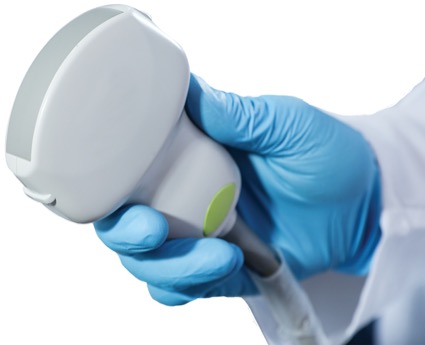Despite more than 280,000 appendectomies being performed in the United States every year, appendicitis remains a diagnostic challenge. Up to 40% of cases do not present in the classic manner, and the negative appendectomy rate has stayed the same for decades.
During the American College of Surgeons Clinical Congress 2020, Norma T. Walks, MD, a general surgeon at Yuma Regional Medical Center, in Arizona, discussed the benefits of using ultrasound to diagnose appendicitis and compared it with the current gold standard CT.
“Although it has its limitations, ultrasound can be a valuable tool for evaluating appendicitis,” Dr. Walks said. “The specificity of ultrasound approaches that of CT scan without the concurrent risks, and it can be a valuable adjunct for indeterminate cases.”
Problems With the Gold Standard
As Dr. Walks reported, the use of CT imaging for diagnosing appendicitis has been increasing steadily since the 1990s. Although fast and accurate, with a sensitivity and specificity of approximately 95% in both adults and children, CT scans present some problems.
“CT scans are expensive; you have to deal with IV or oral contrast; and rural access can be particularly challenging,” Dr. Walks explained.
A 2008 study of the imaging capabilities of various emergency departments in the United States found that although CT scanners were available in most (96%), 5% of rural hospitals had on-call CT technicians and 1% had no after-hours access. Rural hospitals also tended to have lower-resolution CT scanners of less than four slices, Dr. Walks said.
Another problem is that CT scans are associated with radiation exposure. A 2013 study from the National Institutes of Health found that CT scans of the abdomen and pelvis cause one cancer for every 300 to 390 scans in girls and 670 to 760 scans in boys, respectively.
Advantages of Ultrasound Imaging
In contrast, ultrasound has the benefit of being fast and low cost with no radiation risks. In addition, no contrast is needed, Dr. Walks said, and it provides immediate point-of-care imaging. Although ultrasound is easily repeatable, it’s considered operator dependent and technician skill can affect its utility.
The patient’s anatomy can also be a barrier. “When the appendix is in the retrocecal position, it can change the field of view,” Dr. Walks noted. “Obesity, previous surgeries and perforation can also influence the effectiveness of ultrasound.”
The sensitivity and specificity of ultrasound are inferior to CT scans. A meta-analysis comparing CT scans and ultrasounds in children and adults found that ultrasound had a sensitivity and specificity of 88% and 94%, respectively (Radiology 2018;288[3]:717-727). Although CT scans had a higher sensitivity at 94%, the specificity of 95% did not differ by much, Dr. Walks said.
In addition, ultrasound has been used to reduce the negative appendectomy rate. Guidelines for appendicitis introduced in the Netherlands in 2010, that made ultrasound imaging mandatory for suspected appendicitis in children, helped to decrease the rate of negative appendectomy to 2.7% without increasing the frequency of CT scans.
Learning the Technique
For competence in ultrasound, there’s a shallow learning curve, according to Dr. Walks, who noted that studies have shown rapid improvement in performance with minimal experience. In one study, for example, third-year surgery residents being trained in ultrasound on children improved their accuracy from 85% at the start of a three-day course to 93% by the end.
As Dr. Walks explained, ultrasound technicians use a technique called graded compression and look for the following primary signs: blind tubular structure, diameter greater than 6 mm and a “target sign” as with CT imaging. Secondary signs include free fluid, compression, fat changes and a phlegmon.
“Ultrasound is cheap, fast, safe and relatively easy to learn,” Dr. Walks concluded. “Basically, if you see something on ultrasound, it means something.”
The moderator of the session, Daniel L. Dent, MD, the director of the general surgery residency program and a professor of surgery at the University of Texas Health Science Center at San Antonio School of Medicine, acknowledged “trust issues” concerning ultrasound, given the “fuzziness of the pictures.”
Dr. Dent said: “I’ve been spoiled by having good CT imaging. How much practice should it take to develop trust in my own ability to interpret ultrasound, and where is it typically performed?”
“Personally, I would just practice wherever I have access, whether it’s in the pre-op area or the operating room, but it’s really not that complicated,” Dr. Walks said. “You don’t have to be that sophisticated in your ultrasound skills to see an appendicitis. If you see a tubular structure in the right lower quadrant, there’s probably something wrong with the patient’s appendix.”

